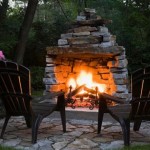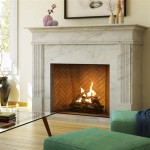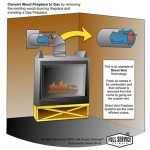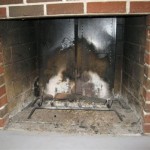Corner Two-Sided Fireplaces: Design, Benefits, and Considerations
Corner two-sided fireplaces, also known as corner peninsula fireplaces or corner see-through fireplaces, represent a compelling design choice for modern homes. These fireplaces offer a unique visual element, combining the warmth and ambiance of a traditional fireplace with an open and contemporary aesthetic. They are specifically designed to be installed in a corner, allowing the fireplace to serve as a focal point that visually connects two adjacent rooms. This architectural feature not only enhances the aesthetic appeal of a space but also contributes to its overall functionality and perceived value.
The functionality of a corner two-sided fireplace stems from its ability to radiate heat and provide visual enjoyment to two separate areas simultaneously. This is particularly advantageous in open-concept homes or areas where distinct living spaces blend together. The shared warmth and captivating flames create a cohesive and inviting atmosphere, fostering a sense of connection between the rooms. Furthermore, the see-through design allows for natural light to permeate more freely, reducing reliance on artificial lighting and contributing to a brighter and more energy-efficient living environment.
The installation of a corner two-sided fireplace involves several considerations, ranging from structural integrity to safety regulations. Careful planning and professional installation are paramount to ensure optimal performance and longevity. Understanding the various design options, fuel types, and safety requirements is essential for making an informed decision and achieving the desired aesthetic and functional outcome. This article will explore the key aspects of corner two-sided fireplaces, including their benefits, design considerations, installation requirements, and safety protocols.
Advantages of Corner Two-Sided Fireplaces
Corner two-sided fireplaces present a multitude of benefits, making them an attractive option for homeowners seeking to enhance their living spaces. These advantages extend beyond mere aesthetics, encompassing functional improvements and lifestyle enhancements.
One of the primary advantages is the enhanced visual appeal. The corner placement allows the fireplace to become a striking focal point, drawing the eye and creating a sense of sophistication. The see-through design further amplifies this effect, allowing the flames to be viewed from multiple angles and providing a dynamic visual display. This can significantly elevate the overall aesthetic of the rooms it connects.
Another significant benefit is the efficient distribution of heat. By radiating warmth into two separate rooms, the fireplace effectively doubles its heating capacity. This can lead to reduced energy consumption and lower heating costs, especially during colder months. The open design also promotes better air circulation, ensuring that the heat is evenly distributed throughout the space.
Furthermore, corner two-sided fireplaces contribute to a more open and connected living environment. The see-through design eliminates the visual barrier between rooms, creating a sense of spaciousness and continuity. This is particularly beneficial in smaller homes or apartments, where maximizing the perceived living area is crucial. The shared warmth and visual connection foster a sense of togetherness and encourage social interaction between individuals in different rooms.
Finally, the addition of a corner two-sided fireplace can increase the property value. The unique design and functional benefits make it a desirable feature for potential buyers. It demonstrates a commitment to quality and design, adding a touch of luxury and sophistication to the home. This can translate into a higher resale value and a more competitive edge in the real estate market.
Design Considerations for Corner Two-Sided Fireplace
Designing a space with a corner two-sided fireplace requires careful planning and consideration of various factors. The design should not only complement the existing architecture but also meet the specific needs and preferences of the homeowner. Several key aspects warrant particular attention during the design phase.
The first consideration is the overall style and aesthetic. The fireplace should seamlessly integrate with the existing décor and architectural style of the home. This involves selecting appropriate materials, finishes, and design elements that complement the surrounding environment. For example, a modern home might benefit from a sleek, minimalist design with clean lines and neutral colors, while a more traditional home might opt for a classic brick or stone surround with ornate detailing.
The placement of the fireplace within the corner is another crucial factor. The optimal placement will maximize the visual impact and heat distribution while minimizing any potential obstructions or safety hazards. It is important to consider the existing furniture layout, traffic flow, and sightlines to ensure that the fireplace is strategically positioned. The size of the fireplace should also be proportionate to the size of the rooms it connects, avoiding a design that overwhelms the space or feels disproportionate.
The choice of materials is a significant aesthetic and functional design element. Common materials include brick, stone, tile, and metal. Each material offers unique visual characteristics and performance properties. Brick and stone provide a classic and timeless appeal, while tile offers a wider range of colors and patterns. Metal can add a modern and industrial touch. The materials should be durable, heat-resistant, and easy to maintain. Furthermore, the textures and colors of the materials should complement the surrounding décor and create a cohesive design.
Adequate ventilation is a critical consideration, particularly for wood-burning fireplaces. Proper ventilation ensures that the smoke and combustion gases are efficiently exhausted from the home, preventing potential health hazards and maintaining air quality. The design should incorporate a well-functioning chimney or flue system that meets all applicable building codes and regulations. Professional installation is essential to ensure proper ventilation and prevent potential fire hazards.
Finally, the design should incorporate appropriate safety features to protect against burns and accidental contact with the hot surfaces. This includes installing heat shields or barriers around the fireplace, especially in areas where children or pets are present. The use of tempered glass on the see-through sides can also provide an additional layer of protection. The overall design should prioritize safety without compromising the aesthetic appeal of the fireplace.
Installation and Safety Requirements
The installation of a corner two-sided fireplace is a complex undertaking that requires adherence to strict safety protocols and building codes. Improper installation can lead to safety hazards, reduced efficiency, and potential structural damage. It is highly recommended to engage a qualified and experienced professional for the installation process.
The first step in the installation process is to obtain the necessary permits and approvals from local building authorities. This ensures that the installation complies with all applicable regulations and safety standards. The specific requirements may vary depending on the location and the type of fireplace being installed.
The structural integrity of the corner must be assessed to ensure that it can support the weight of the fireplace and chimney. Reinforcements may be necessary to strengthen the existing structure and prevent potential settling or collapse. A structural engineer can provide guidance and recommendations on the appropriate measures to take.
The installation of the chimney or flue system is a critical aspect of the process. The chimney must be properly sized and installed to ensure adequate ventilation and prevent the buildup of dangerous gases. The chimney should extend above the roofline to provide sufficient draft and prevent downdrafts. Regular inspection and maintenance of the chimney are essential to ensure its continued functionality and safety.
The connection of the fireplace to the fuel source, whether it be gas, electricity, or wood, must be done in accordance with all applicable safety codes and regulations. Gas lines should be properly sealed and tested for leaks. Electrical connections should be grounded and protected against overload. Wood-burning fireplaces should be equipped with a spark arrestor to prevent embers from escaping and causing fires.
Proper insulation is essential to prevent heat loss and protect the surrounding walls and framing from excessive heat. Heat-resistant materials should be used to insulate the fireplace and chimney, minimizing the risk of fire and improving energy efficiency. The insulation should be installed in accordance with the manufacturer's instructions and all applicable building codes.
A thorough inspection of the installed fireplace should be conducted to ensure that it is functioning properly and that all safety features are in place. This includes checking for leaks, proper ventilation, and secure connections. The homeowner should be provided with detailed instructions on the safe operation and maintenance of the fireplace.
Regular maintenance is crucial for ensuring the longevity and safety of the fireplace. This includes cleaning the chimney, inspecting the flue, and checking for any signs of damage or wear. Professional chimney sweeps can provide comprehensive cleaning and inspection services. By adhering to these installation and safety requirements, homeowners can enjoy the benefits of a corner two-sided fireplace while minimizing the risks associated with its operation.
Corner Two Sided Gas Fireplace Heat Glo

Vantage Hearth Direct Vent Gas Corner Fireplace

Corner Two Sided Gas Fireplace Capo Fireside

Chicago Corner 40re Designer Gas Fireplace Regency

Result For Two Sided Corner Fireplace With Built In Wood Home Brick Makeover

Vantage Hearth B Vent Gas Corner Fireplace

D1000vad Fireplace Corner Double Sided Wood

Corner Fireplace Insert Visio 2 L Attika Feuer Ag Wood Burning Steel Contemporary

Hearth Home Technologies Corner Gas Fireplace Fireside

Flex 68lc Bx2 Left Corner Fireplace Insert Ecosmart Fire
Related Posts








